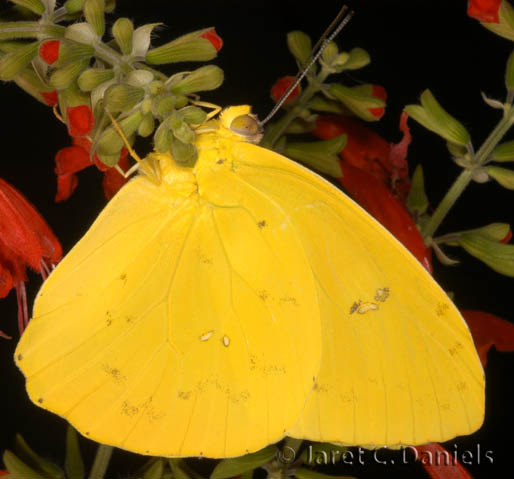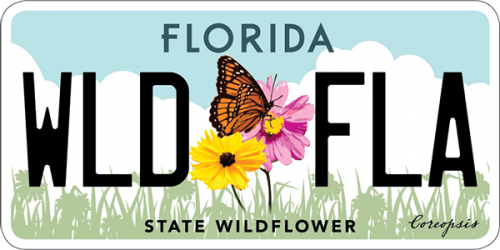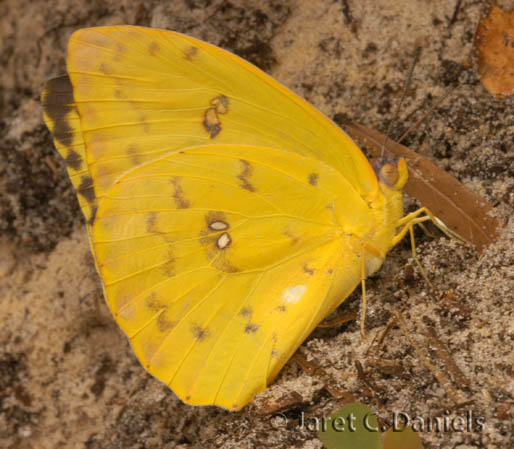- Family name: Pieridae/Whites and Sulphurs
- General description: male bright yellow; forewing with wide orange bar in center; hindwing with orange along lower margin. Female whitish (wet season) to yellow with reddish-orange band along lower margin (dry season); forewing with narrow black border, small black cell spot, and broken black diagonal line from apex. Ventral wing surfaces yellow to orange-yellow with small brownish spots, more extensive in dry season individuals
- Field Marks: General: large Male: yellow; forewing with broad orange bar Female: white to yellow; forewing with narrow black margin, small black sell spot, and broken black diagonal line from apex
- Sexes: appear different
- Wingspan: 65-80 mm

- Life Cycle: Egg: whitish, spindle-shaped, laid singly on host leaves Mature larva: green to yellow with black lateral stripes and numerous small black points Chrysalis: green to pink
- Number of Generations: multiple
- Flight Season: All year
- Abundance: Common
- Habitat: parks, gardens,
- Larval Host Plants: Christmas cassia (Cassia bicapsularis), Candle plant (Cassia alata), Bahama cassia (Cassis chapmanii)
- Similar Species: Cloudless Sulphur
- Additional Information: Temporarily colonizes portions of north Florida each year.
- Range in Florida
 The Florida Wildflowers & Butterflies projects at the Florida Museum are sponsored in part by the State of Florida and the Florida Wildflower Foundation, Inc.
The Florida Wildflowers & Butterflies projects at the Florida Museum are sponsored in part by the State of Florida and the Florida Wildflower Foundation, Inc.
